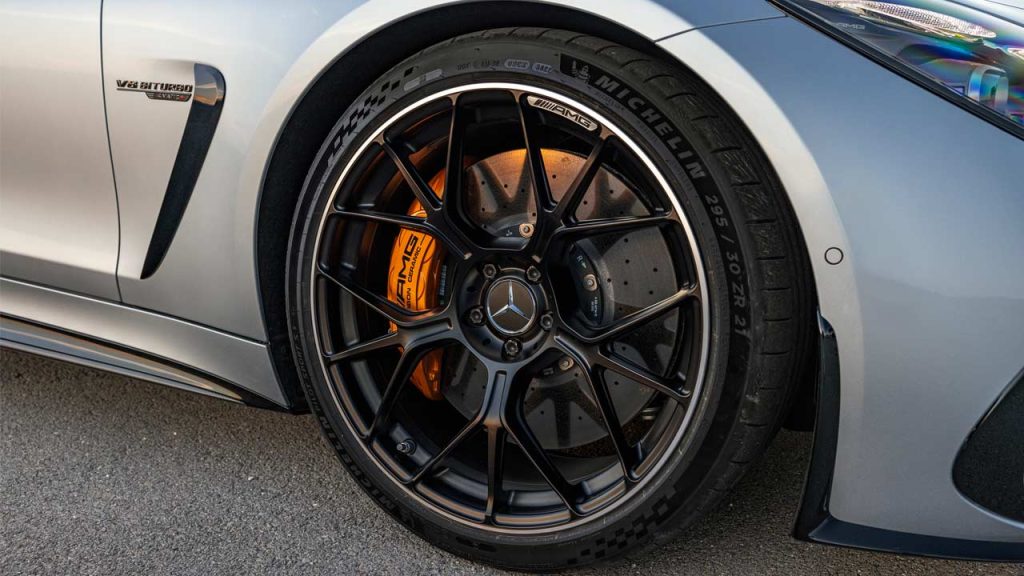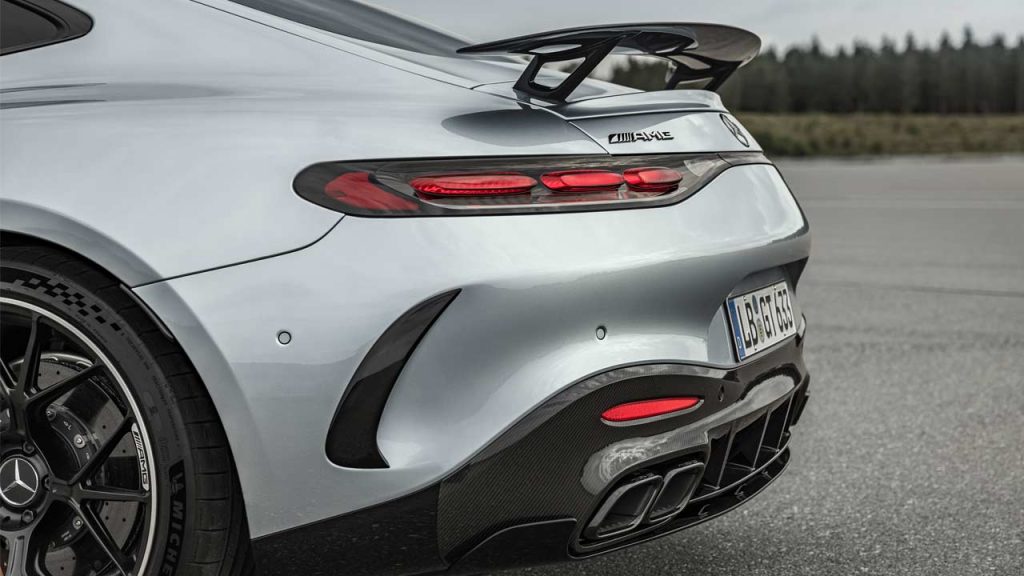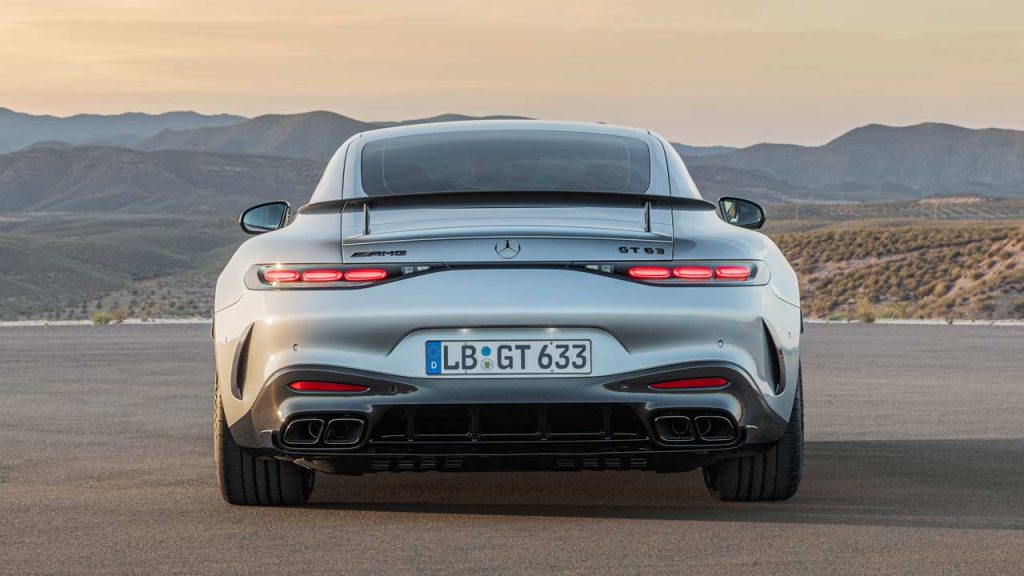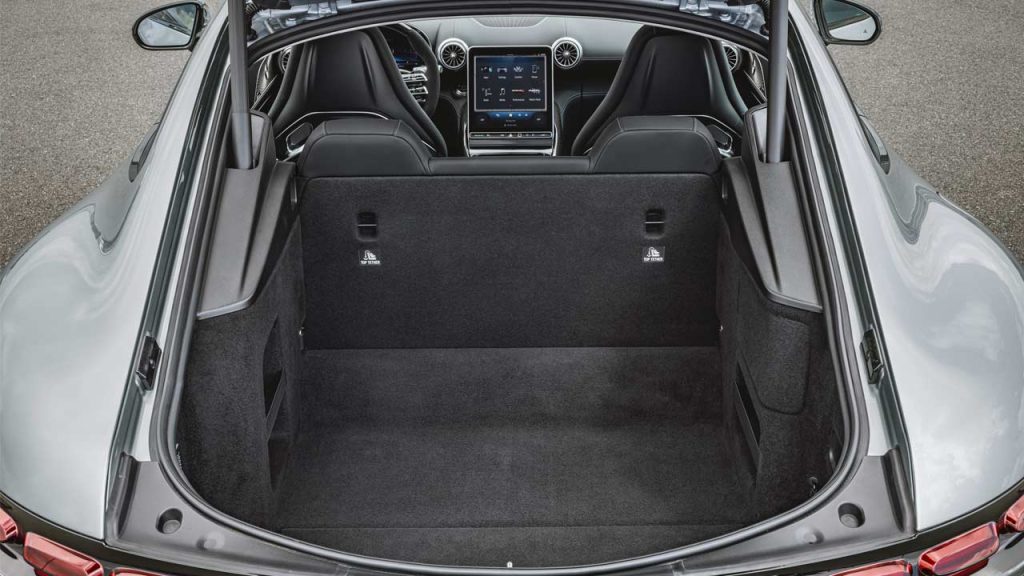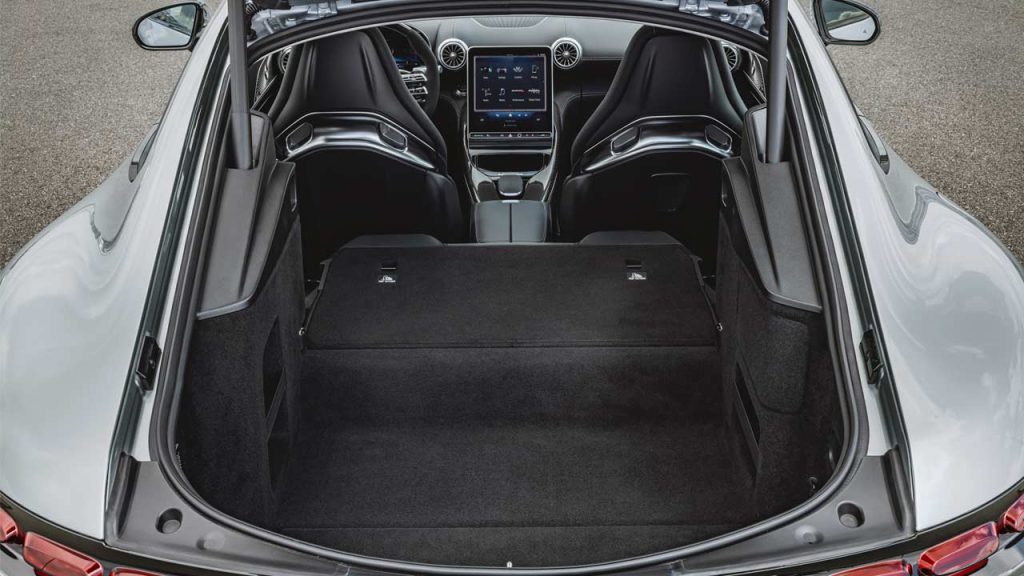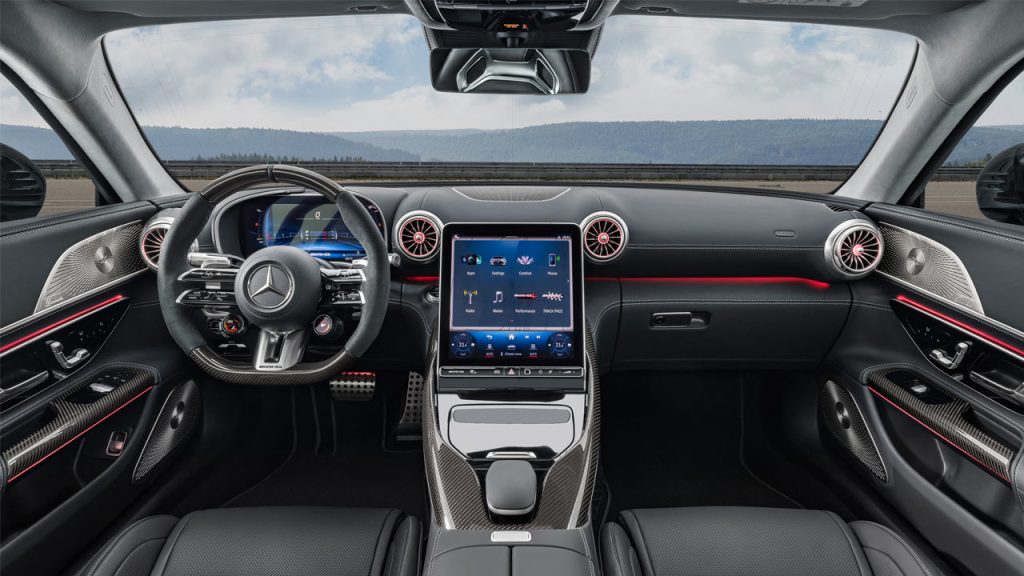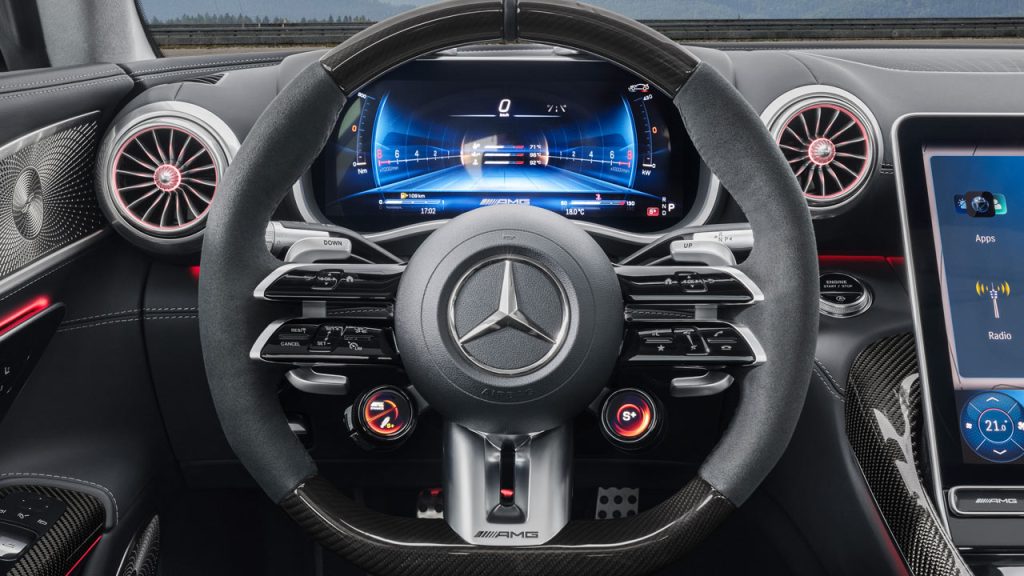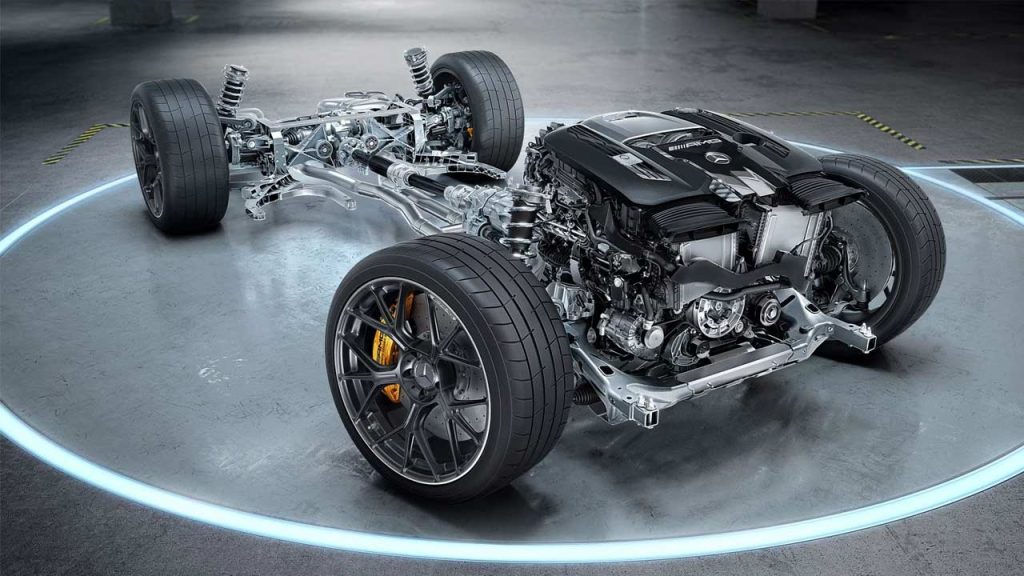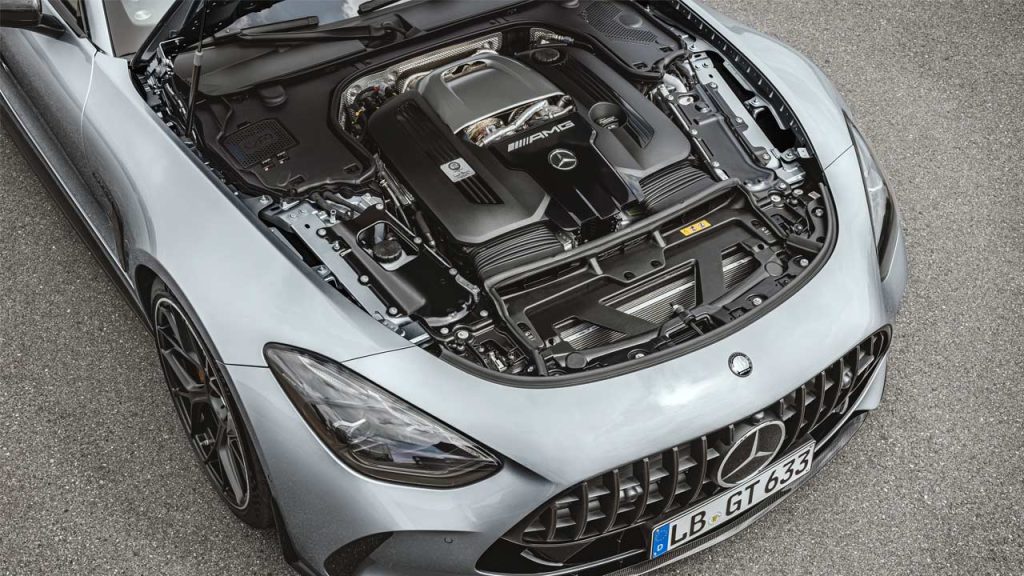Aggression lost in the transition?
The Mercedes-AMG GT was a tremendous success; it looked right and its V8 biturbo burbled & grumbled right, and therefore, it was no surprise that the moment it arrived in 2015, it had success written all over it. The GT Black Series in 2020 and the GT Track Series in 2022 further contributed to an already celebrated nameplate. Now though, there’s the second-generation Mercedes-AMG GT, hoping to continue the original GT’s success story.
The second-gen AMG GT comes only in a coupe bodystyle, because if you remember, in 2021, MB suggested that the R232 AMG SL is the direct successor to the AMG GT Roadster (discontinued in 2021). Which also should tell you something, right? Well, if it’s not already obvious, the second-gen AMG GT is built on the same platform as the R232 AMG SL. Which is also probably why the new GT doesn’t look as menacing as the original GT; it looks.. a bit soft, if I’m being honest. From the rear-three-quarter angles, it looks more like a Porsche. But anyway, there’ll be two variants at launch: AMG GT 55 4Matic+ Coupe and AMG GT 63 4Matic+ Coupe, and it’s the latter we’re seeing the photos here.
Active aero bits include the Airpanel system at the front, featuring a first part with vertical slats hidden behind the lower air intake and a second part with horizontal slats located behind the upper air intake. Normally all slats are closed to redirect the air flow underbody to help reduce front lift. Only when cooling is required for certain components, do the fins open. Another active component is, of course, the retractable rear spoiler that is integrated into the trunk lid (that fixed wing is part of an optional package). Above 80 km/h (50 mph), the spoiler assumes five different angular positions to either optimize driving stability or reduce air resistance.
There’s another active aero element hidden underbody, which helps with better handling. Depending on the chosen drive mode, this carbon element automatically lowers by around 40 mm at 80 km/h (50 mph), creating a Venturi effect—which sucks the car onto the road and reduces lift on the front axle.
AMG Active Ride Control suspension with roll stabilization is another key highlight of this new GT. Active hydraulic elements replace the conventional mechanical anti-roll bars and compensate for rolling movements. The adaptive shock absorbers also have two hydraulic connections. One is on the compression side of the damper and the other is on the tension side. The damper chambers on all four wheels and the lines are connected directly via the control valves of the adaptive dampers.
Electronically-controlled rear axle locking differential, active rear-axle steering, and composite brake discs are some of the other key highlights. The discs measure 390 mm at the front gripped by 6-piston calipers and 360 mm at the front gripped by single-piston calipers.
For those curious to know, the new AMG GT measures 4,728 mm long, 1,984 mm wide and 1,354 mm tall, with a wheelbase of 2,700 mm, which makes it significantly larger than the generation it replaces. Boot space is claimed to be anywhere between 321 and 675 litres, and yes, the +2 seats fold to create that extra carrying space. As standard, both variants roll off the assembly line on 20‑inch AMG multi‑spoke light‑alloy wheels as standard, but 21-inch options are available.
Which then brings us to the inside of the new AMG GT, and unsurprisingly, it looks almost identical to that of the R232 AMG SL. If you’re still scratching your heads, think of the R232 AMG SL and the second-gen AMG GT as the same cars with different bodystyles. If you want a convertible, go for the SL and if a coupe is your preference, pick the GT. But anyway, key features inside include the AMG performance steering wheel in double-spoke design; electrically-adjustable AMG sports seats with integrated headrests (AMG performance seats are optional); a 11.9-inch touchscreen; a 12.3-inch LCD instrument cluster, and of course, an optional head-up display.
Moving on to the juicy bits of the story, the AMG GT 55 4Matic+ Coupe packs a 4.0L V8 biturbo motor that pumps out 350 kW (476 metric hp) between 5,500 and 6,500 rpm and 700 Nm (516 lb-ft) of torque between 2,250 and 4,500 rpm. The engine is coupled with a 9-speed multi-clutch automatic transmission and fully-variable 4Matic all-wheel-drive system. The official 0-100 km/h (62 mph) sprint time is 3.9 seconds and the top speed is 295 km/h (183 mph). Kerb weight is claimed to be 1,970 kg (4,343 lbs).
The AMG GT 63 4Matic+ Coupe is also powered by the same, famous 4.0L V8 biturbo, but the output figures here are 430 kW (585 metric hp) between 5,500 and 6,500 rpm and 800 Nm (590 lb-ft) between 2,500 and 5,000 rpm. The increased figures are most likely due to larger turbos and other software tweaks. But anyway, in this case, the official 0-100 km/h (62 mph) sprint time is 3.2 seconds and the top speed is 315 km/h (196 mph). Kerb weight is claimed to be the same as that of the 55.
An electrified variant is expected to join the lineup at a later date.

Leave a Reply
Note: Comments that are unrelated to the post above get automatically filtered into the trash bin.


